Parents’ and Children’s Experiences with a Coordinating Professional in Integrated Care for Childhood Overweight and Obesity—A Novel Dutch Approach
Abstract
:1. Introduction
2. Materials & Methods
2.1. Research Team and Reflexivity
2.2. Study Design
2.3. Data Collection
2.4. Data Analysis Strategies
2.5. Ethical Issues
3. Results
3.1. Findings
3.2. Experiences of Parents with the CP
3.2.1. Evaluating the Role of the CP
“Yes, I’ve definitely noticed that. Based on her questions and interest, it’s not just about what she eats all day, but how does she feel. Yes, so I have noticed that.”(Mother 2)
Interviewer: “And have you had any contact with [name YHC nurse] recently, the YHC nurse?” Father: “Hmm no.” Mother: “No, because he said that if there is anything, I can always call him. So yes, you can. I ran into him yesterday”. Interviewer: “In the neighborhood here?” Mother: “Yes, yes.”(Mother and father 3)
“Yes, because it was a problem for me, because at a certain point, [YHC nurse] had left and the Youth Sport Fund had to be arranged. Then I thought, oh my God, where do I have to go now? However, fortunately, there is also someone at school who can arrange that.”(Mother 6)
3.2.2. Appreciation of the YHC Nurse as a CP
Interviewer: “If you had to give the YHC nurse a grade, what grade would you give him?”
Mother: “Yes, for me it would be a 10.”
Interviewer: “Yes, tell me, why would you give him a 10?”
Mother: “Yes, because they are doing really well. They don’t give you the feeling like hey, I know everything, and you do everything wrong. Yes.”(Mother 3)
3.3. Experiences of Children with the CP
“Yes, he listens well, he also understands me with many things. I liked it.”(Child 4)
“The conversations we had were really nice and I felt understood really well.”(Child 1)
3.4. Experiences of Families with the ICCO
3.4.1. Involved Professionals
3.4.2. Collaboration between Professionals
“At the hospital they check and advise and if I want help, they work together with [child welfare organisation] as well. [Child welfare organisation] and the school and psychiatrist for [name interviewed child] and [name other daughter] have been to the psychiatrist in [municipality]. She [CP] has contacted all these people.”(Mother 7)
“Well then it would perhaps have been nicer if I had had a bit more information about that, would have had all the possibilities. And um, look, if there were a, if it was clear to me that there is a dietician and a psychologist who work together in the context of overweight in this approach, that would be a lower threshold for me to go there than being referred to a psychologist. That would really mean to me that he belongs here in this little circle, right? Which path do you chose? He is also involved in the overweight problem. That would have helped me. If I had known...”(Mother 2)
3.4.3. Creating a Healthy Environment for Children
“Well, I think the initiative is just super good and I think they should continue with it and actually expand it even more. Because at a certain point people will go along with it anyway because they have no choice, and they can’t do otherwise. And that’s just like at school, if a parent comes along and wants to treat them with crisps, well, that’s bad luck, because then they’ve just bought them for nothing.”(Mother 5)
3.5. Tops and Tips by Interviewed Families
“So, I felt supported, yes, what I find really difficult is to talk about overweight in front of [child]. Because I just don’t think that’s necessary. I think it’s good to teach her to be healthy with her weight, but I also find it very difficult to talk with her about being overweight.”(Mother 2)
3.6. Comparison with Families Receiving Care as Usual
4. Discussion and Conclusions
4.1. Strengths and Limitations
4.2. Conclusions
4.3. Recommendations
- Use the feedback of the experiences of parents and children for further development of the CP’s role in the ICCO.
- Retain and further invest into the supportive attitude of the CP, the approachability, the broad perspective and the adaptation to the needs of the family which appear to be the most innovative and appealing to families with children with overweight and obesity.
- Follow-up by the CP should be better organized and agreed upon with parents.
- Make the role of CP more explicit and position it more clearly, also towards parents. Explain what the CP can do for families in addition to the ‘normal’ tasks of YHC.
- Offer parents the possibility to speak to the CP alone, without the child present.
- Explain to parents what the ICCO is, and which professionals work together. What kind of low threshold possibilities does this offer?
- Look carefully in which target group the support of a CP is most appropriate. The CP can focus on families with complex problems, where multiple professionals are involved.
- Discuss whether it is wanted that all YHC nurses work as a CP or that some YHC nurses specialize to fulfil this role.
Supplementary Materials
Author Contributions
Funding
Institutional Review Board Statement
Informed Consent Statement
Data Availability Statement
Acknowledgments
Conflicts of Interest
References
- WHO. Obesity and Overweight. Published 2020. Available online: https://www.who.int/news-room/fact-sheets/detail/obesity-and-overweight (accessed on 4 February 2021).
- Netherlands, S. One Quarter of Young Adults Are Overweight. 2019. Available online: https://www.cbs.nl/en-gb/news/2019/15/one-quarter-of-young-adults-are-overweight (accessed on 2 July 2021).
- Karnebeek, K.; Thapar, S.; Willeboordse, M.; van Schayck, O.C.P.; Vreugdenhil, A.C.E. Comorbidities in primary versus secondary school children with obesity and responsiveness to lifestyle intervention. J. Clin. Endocrinol. Metab. 2019, 104, 3803–3811. [Google Scholar] [CrossRef] [PubMed]
- Buttitta, M.; Iliescu, C.; Rousseau, A.; Guerrien, A. Quality of life in overweight and obese children and adolescents: A literature review. Qual. Life Res. 2014, 23, 1117–1139. [Google Scholar] [CrossRef] [PubMed]
- Ells, L.J.; Rees, K.; Brown, T.; Mead, E.; Al-Khudairy, L.; Azevedo, L.; McGeechan, G.J.; Baur, L.; Loveman, E.; Clements, H.; et al. Interventions for treating children and adolescents with overweight and obesity: An overview of Cochrane reviews. Int. J. Obes. 2018, 42, 1823–1833. [Google Scholar] [CrossRef] [PubMed] [Green Version]
- van Mil, E.; Struik, A. Overweight and Obesity in Children: More Than Just the Kilos. Pediatr. Phys. Ther. 2017, 29 (Suppl. 3), S73–S75. [Google Scholar] [CrossRef] [PubMed]
- Iguacel, I.; Gasch-Gallen, A.; Ayala-Marin, A.M.; De Miguel-Etayo, P.; Moreno, L.A. Social vulnerabilities as risk factor of childhood obesity development and their role in prevention programs. Int. J. Obes. 2021, 45, 1–11. [Google Scholar] [CrossRef] [PubMed]
- Grootens-Wiegers, P.; van den Eynde, E.; Halberstadt, J.; Seidell, J.C.; Dedding, C. The “Stages towards Completion Model”: What helps and hinders children with overweight or obesity and their parents to be guided towards, adhere to and complete a group lifestyle intervention. Int. J. Qual. Stud. Health Well-Being 2020, 15, 1735093. [Google Scholar] [CrossRef] [PubMed] [Green Version]
- Seidell, J.C.; Halberstadt, J. National and Local Strategies in the Netherlands for Obesity Prevention and Management in Children and Adolescents. Obes. Facts 2020, 13, 418–429. [Google Scholar] [CrossRef] [PubMed]
- Sijben, M.; van der Velde, M.; van Mil, E.; Stroo, J.; Halberstadt, J. Landelijk Model Ketenaanpak Voor Kinderen Met Overgewicht en Obesitas. Published 2018. Available online: https://www.kindnaargezondergewicht.nl/media/pages/home/3172473238-1586855029/landelijk-model.pdf (accessed on 9 July 2020).
- Van Mil, E.; Struik, A. Verder kijken dan de kilo’s. In Overgewicht en Obesitas bij Kinderen; Uitgeverij Boom Amsterdam: Amsterdam, The Netherlands, 2015. [Google Scholar]
- de Laat, S.; de Vos, I.; Jacobs, M.; van Mil, E.; van de Goor, I. The evaluation of an integrated network approach of preventive care for children with overweight and obesity; study protocol for an implementation and effectiveness study. BMC Public Health 2019, 19, 979. [Google Scholar] [CrossRef] [PubMed] [Green Version]
- Koetsier, L.W.; van Mil, M.M.A.; Eilander, M.M.A.; van den Eynde, E.; Baan, C.A.; Seidell, J.C.; Halberstadt, J. Conducting a psychosocial and lifestyle assessment as part of an integrated care approach for childhood obesity: Experiences, needs and wishes of Dutch healthcare professionals. BMC Health Serv. Res. 2021, 21, 611. [Google Scholar] [CrossRef] [PubMed]
- van Vooren, N.; Beijer, M.; Spijkerman, A. Lokale Implementatie Aanpak Kind Naar Gezonder Gewicht. Waar Staan We en Wat Kunnen We Leren? RIVM. June 2021. Available online: https://www.rivm.nl/documenten/kind-naar-gezonder-gewicht (accessed on 24 November 2021).
- de Laat, S.; van Mil, M.; Jacobs, M.; Van Mil, E.; van de Goor, I. Evaluation of intersectoral collaboration in the integrated approach for childhood overweight and obesity in ‘s-Hertogenbosch West; a qualitative study. BMC Public Health 2021. submitted. [Google Scholar]
- de Laat, S.; Jacobs, M.; Markus, A.; van Mil, E.; van de Goor, L. De rol van de jeugdverpleegkundige en jeugdarts in de ketenaanpak voor kinderen met overgewicht in ‘s-Hertogenbosch. JGZ Tijdschr. Voor Jeugdgezondheidsz. 2019, 51, 161–167. [Google Scholar] [CrossRef]
- de Laat, S.; Jacobs, M.; Mathijssen, J.; van de Goor, I.; van Mil, E. The effect of integrated care for childhood overweight and obesity on quality of life and overweight. Int. J. Obes. 2021. submitted. [Google Scholar]
- Braun, V.; Clarke, V. Using thematic analysis in psychology. Qual. Res. Psy. 2006, 3, 77–101. [Google Scholar] [CrossRef] [Green Version]
- Cole, T.J.; Lobstein, T. Extended international (IOTF) body mass index cut-offs for thinness, overweight and obesity. Pediatr. Obes. 2012, 7, 284–294. [Google Scholar] [CrossRef] [PubMed]
- Bachra, M.; Halberstadt, J. Samenwerken aan Passende Ondersteuning en Zorg Voor Kinderen Overgewicht en Obesitas. In Kind naar Gezonder Gewich. Available online: https://jogg.nl/nieuws/in-gesprek-met-marjon-bachra-en-jutka-halberstadt (accessed on 24 November 2021).
- Verkade, F.W.E.; Rutten, N.; Arayess, L.; Vreugdenhil, A. Rapport Your Coach Next Door, Resultaten Interventies 2019–2020. 2021. Available online: https://www.ycnd.nl/ (accessed on 24 November 2021).
- McPherson, A.C.; Hamilton, J.; Kingsnorth, S.; Knibbe, T.J.; Peters, M.; Swift, J.A.; Krog, K.; Chen, L.; Steinberg, A.; Ball, G.D.C. Communicating with children and families about obesity and weight-related topics: A scoping review of best practices. Obes. Rev. 2017, 18, 164–182. [Google Scholar] [CrossRef] [PubMed]
- Ames, H.; Mosdol, A.; Blaasvaer, N.; Nokleby, H.; Berg, R.C.; Langoien, L.J. Communication of children’s weight status: What is effective and what are the children’s and parents’ experiences and preferences? A mixed methods systematic review. BMC Public Health 2020, 20, 574. [Google Scholar] [CrossRef] [PubMed]
- Jones, H.M.; Al-Khudairy, L.; Melendez-Torres, G.J.; Oyebode, O. Viewpoints of adolescents with overweight and obesity attending lifestyle obesity treatment interventions: A qualitative systematic review. Obes Rev. 2019, 20, 156–169. [Google Scholar] [CrossRef] [PubMed]
- Ter Borg, S.; Vennemann, F.; Milder, I. Jaarrapportage 2017: Programma Gezonde School. 2018. Available online: https://www.google.com.hk/url?sa=t&rct=j&q=&esrc=s&source=web&cd=&cad=rja&uact=8&ved=2ahUKEwj01eKI8tP3AhWIzjgGHYkCAc4QFnoECAUQAQ&url=https%3A%2F%2Fwww.gezondeschool.nl%2Fsites%2Fdefault%2Ffiles%2F2018-12%2FJaarrapportage%25202017%2520Gezonde%2520School.pdf&usg=AOvVaw1nyUOHZjy5q4BUsfN836t_ (accessed on 24 November 2021).
- JOGG. JOGG-aanpak. 2020. Available online: https://jogg.nl/jogg-aanpak (accessed on 29 December 2020).
- Blokstra, A.S.M.; de Hollander, E.L.; Schurink-van ‘t Klooster, T.M. Werkt de JOGG-Aanpak? Veranderingen in Overgewicht en Beweeggedrag bij Kinderen en Jongeren; RIVM: Bilthoven, The Netherlands, 2020. [Google Scholar]
- Van Grieken, A.; Bally, E.; Kremers, S.; Widdershoven, V.; Renders, C.; Seidell, J.; Crone, M.; Jonkman, H. Werkzame Elementen ter Bevordering van een Gezond Gewicht bij JEUGD (WEB-Jeugd). Eindrapportage Voorstudie; Study report; ZonMw: Rotterdam, The Netherlands, 2019. [Google Scholar]
- Sofaer, S. Qualitative methods: What are they and why use them? Health Serv. Res. 1999, 34 Pt 2, 1101–1118. [Google Scholar]
| Interview Group (n = 8) | Questionnaire ICCO Group (n = 38) | |
|---|---|---|
| Child age, year, mean (range) | 10.8 (8–12) | 9.3 (5–13) |
| Child sex, boys, n (%) | 3 (37.5) | 17 (44.7) |
| Obesity (1), n (%) | 6 (75.0) | 15 (39.5) |
| Both parents not born in the Netherlands, n (%) | 5 (62.5) * | 6 (15.8) |
| Mother with lower vocational education or less, n (%) | 3 (37.5) | 7 (18.4) |
| Mother with middle vocational education or more, n (%) | 3 (37.5) | 11 (28.9) |
| Parents have (some) problems to make ends meet (yes/no), n (%) | 4 (50.0) | 12 (31.6) |
| Child lives with both parents (yes/no), n (%) | 6 (75.0) | 29 (76.3) |
| Number of siblings, mean (range) | 1.3 (0–3) | 1 (0–2) |
| Professional | Interview Group (n = 8) | Questionnaire ICCO Group (n = 38) * | ||
|---|---|---|---|---|
| Pediatrician | 3 | 37.5% | 8 | 21.1% |
| Social Worker | 2 | 25.0% | 3 | 7.9% |
| Social Neighborhood Team | 1 | 12.5% | 1 | 2.6% |
| Dietician | 1 | 12.5% | 12 | 31.6% |
| Physiotherapist | 2 | 25.0% | 4 | 10.5% |
| Combined Lifestyle Intervention | 0 | 0.0% | 1 | 2.6% |
| Lifestyle coach | 1 | 12.5% | 1 | 2.6% |
| Number of Referrals by Youth Health Care in 38 Children | Number of Referrals by General Practitioner in 38 Children | |
|---|---|---|
| Pediatrician | 4 (10.5%) | 5 (13.2%) |
| Social Worker | 1 (2.6%) | 0 (0%) |
| Social Neighborhood Team | 1 (2.6%) | 0 (0%) |
| Dietician | 6 (15.8%) | 1 (2.6%) |
| Physiotherapist | 1 (2.6%) | 1 (2.6%) |
| Combined Lifestyle Intervention | 1 (2.6%) | 1 (2.6%) |
| No referral | 23 (60.5%) | 30 (78.9%) |
| Other referral | 3 (7.9%) | 2 (5.3%) |
| Interview Participants * | Tops | Tips |
|---|---|---|
| 1. Mother, father, girl (11 years old) |
| |
| 2. Mother |
|
|
| 3. Mother, father, girl (12 years old) |
|
|
| 4. Mother, girl (11 years old) |
|
|
| 5. Mother, boy (11 years old) |
|
|
| 6. Mother, girl (10 years old) |
|
|
| 7. Mother, boy (10 years old) |
|
|
Publisher’s Note: MDPI stays neutral with regard to jurisdictional claims in published maps and institutional affiliations. |
© 2022 by the authors. Licensee MDPI, Basel, Switzerland. This article is an open access article distributed under the terms and conditions of the Creative Commons Attribution (CC BY) license (https://creativecommons.org/licenses/by/4.0/).
Share and Cite
De Laat, S.A.A.; Jacobs, M.A.M.; Van Mil, E.G.; Van de Goor, I.A.M. Parents’ and Children’s Experiences with a Coordinating Professional in Integrated Care for Childhood Overweight and Obesity—A Novel Dutch Approach. Int. J. Environ. Res. Public Health 2022, 19, 5797. https://doi.org/10.3390/ijerph19105797
De Laat SAA, Jacobs MAM, Van Mil EG, Van de Goor IAM. Parents’ and Children’s Experiences with a Coordinating Professional in Integrated Care for Childhood Overweight and Obesity—A Novel Dutch Approach. International Journal of Environmental Research and Public Health. 2022; 19(10):5797. https://doi.org/10.3390/ijerph19105797
Chicago/Turabian StyleDe Laat, Sanne A. A., Monique A. M. Jacobs, Edgar G. Van Mil, and Ien A. M. Van de Goor. 2022. "Parents’ and Children’s Experiences with a Coordinating Professional in Integrated Care for Childhood Overweight and Obesity—A Novel Dutch Approach" International Journal of Environmental Research and Public Health 19, no. 10: 5797. https://doi.org/10.3390/ijerph19105797






